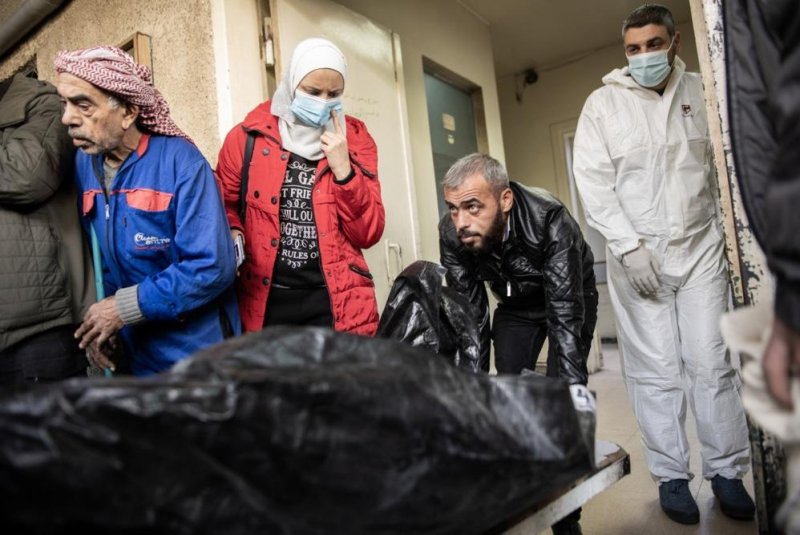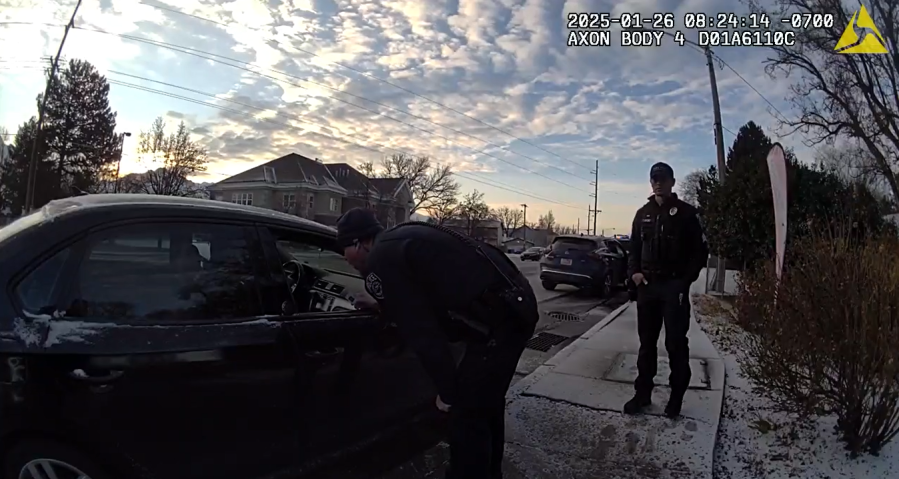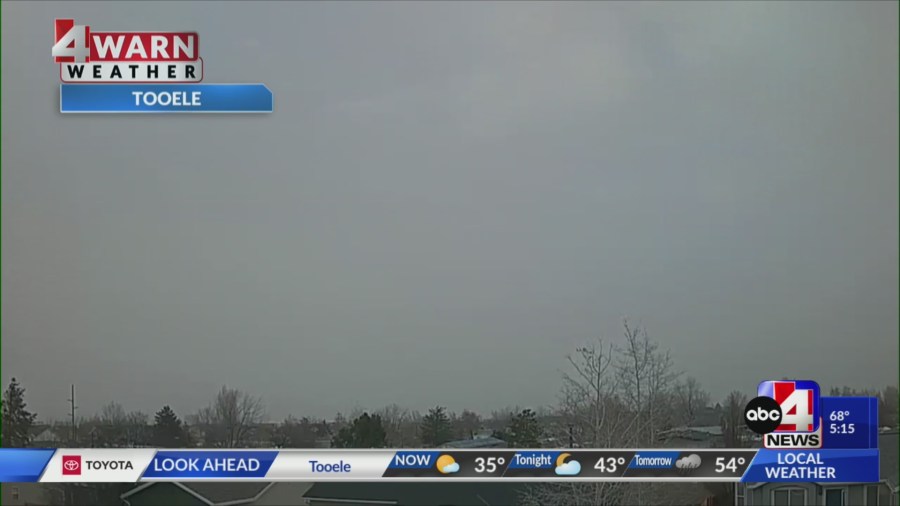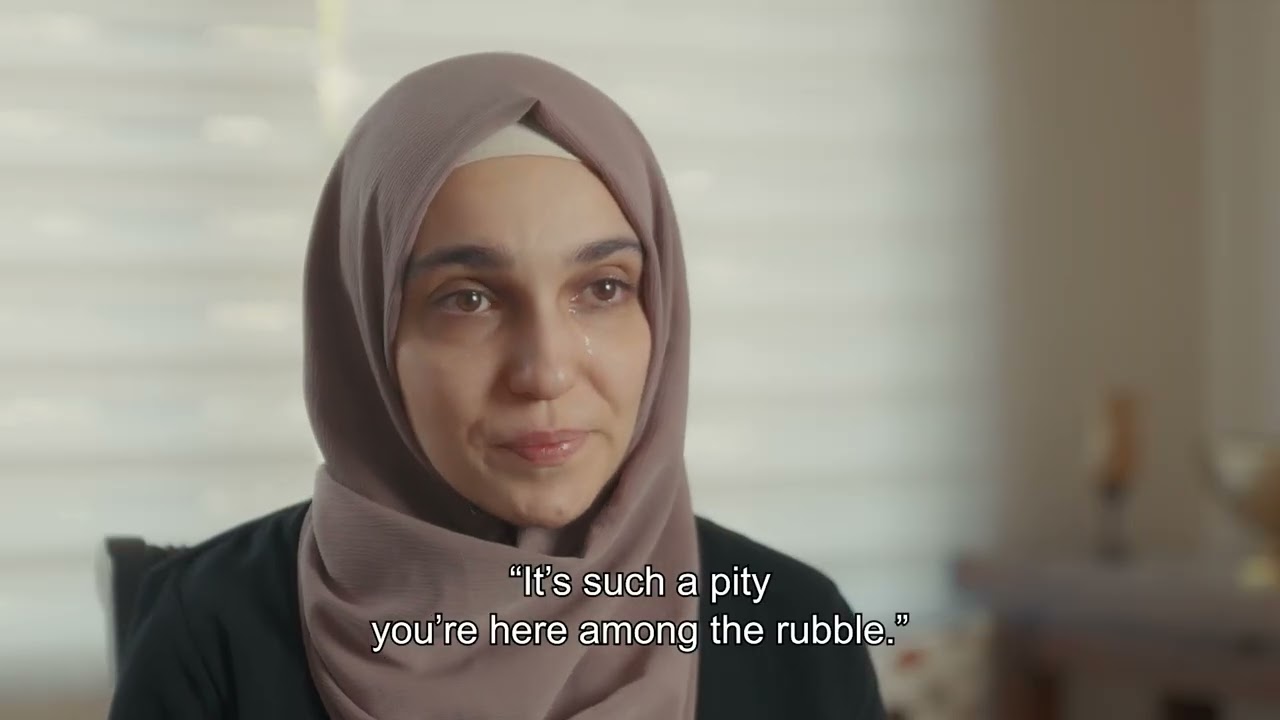Morgue officials carry human remains on a stretcher at Al-Mujtahid Hospital, where people come hoping to identify bodies of their relatives, in Damascus, Syria, on December 12. According to al-Mujtahid Hospital, 20 bodies were identified out of 36 retrieved from prisons after the rebel takeover of Damascus on December 8. File photo by Hasan Belal/EPA-EFE
BEIRUT, Lebanon, Feb. 6 (UPI) — “Caesar,” the Syrian military defector who documented atrocities committed by the Bashar Assad regime by smuggling tens of thousands of photos of Syrian detainees killed by torture during early years of the revolution, revealed his identity Thursday and expressed hope that the “criminal” ousted president will be punished.
Farid Nida al-Madhan, who was the head of the Judicial Evidence Department of the Military Police in Damascus before he defected and fled to Jordan in 2013, disclosed his identity for the first time during an exclusive interview with Al Jazeera TV network.
Al-Madhan said his initial job as part of the military police forensic photography unit was to take pictures of car crashes, fires, suicides and other incidents.
But this changed with the outbreak of the Syrian Uprising in 2011, when he was ordered to take photos of Syrian detainees, including women and children, who were “arrested, tortured and killed in a systematic way.”
Al-Madhan said that at the beginning of the uprising, which started with peaceful anti-Assad demonstrations before turning into a bloody civil war, “the number of bodies ranged between 10 and 15 per day. … With time, it reached sometimes up to 50 daily … brought in big trucks” to document their death.
He recalled when he first entered “the place where the bodies were gathered and saw young men and elderly naked on the floor, I felt I was inside a human slaughterhouse, a killing machine run by people who turned into human monsters.
“I was shocked and horrified. There were signs of strangulation, gouged eyes and broken teeth … and skeletal bodies due to starvation.”
Al-Madhan decided to defect, but had to postpone fleeing the country a couple of times “to be able to collect the biggest number of photos and evidence” that would condemn “this criminal regime.”
He kept secretly copying and saving the photos, hiding the flash memory in his “socks or bread bags” while moving from Damascus to areas under the control of the Free Syrian Army.
In 2013, he made the decision to leave “despite the risks” and managed to flee to Jordan. He then went to Qatar, which hired a British law firm to check the almost 55,000 photos he — with the help of others — took and succeeded to smuggle out.
It was this law firm that suggested he used the pseudonym of “Caesar,” al-Madhan said.
The horrifying pictures led to the United States passing the “Caesar Syria Civilian Protection Act,” which President Donald Trump signed in 2019 during his first term in office. The legislation, which went into effect in June 2020, imposed heavy sanctions on the Assad regime.
Al-Madhan said they also went into European courts, filing lawsuits in France and Germany in cooperation with families of some victims and witnesses.
“All this helped in issuing arrest warrants against Syrian officials, some of whom were arrested and put in jail,” he said.
He said that, even though Assad was toppled in December, such efforts should continue and “trials must open” in Syria as “there are some 16,000 criminals from the [Assad] regime who are accused of war crimes.”
Asked why the regime was documenting its crimes by photographing the tortured victims, he said “there was no logical reason … unless they felt that they were safe and would not be punished or held accountable” by the international community.
“The orders to take photos [of the tortured detainees] used to come from the highest authority to make sure that the killings were executed. … Maybe the heads of the security services wanted to also show their loyalty to the regime,” he said.
Al-Madhan, who now lives in France and has “started to feel secure,” said the Syrian revolution was the “inevitable result of the regime suppression.”
“The truth is we should see criminal Bashar receiving the punishment he deserves,” he said.
Assad’s fall revealed a shocking reality about tens of thousands of detainees when rebel forces stormed his regime-run jails in Damascus and other Syrian regions and freed them.
However, a great number of them, including missing U.S. journalist Austin Tice, remain unaccounted for.
The International Committee of the Red Cross said that it has registered 35,000 cases of people who have gone missing in Syria in the past 13 years.
According to Fadel Abdel Ghany, the head of Syria’s Network for Human Rights, only 33,000 detainees have been found and freed from Syria’s prisons since Assad’s fall, while there are about 80,000 to 85,000 Syrians in forced disappearance, killed under torture in Assad’s centers of detention.
#Syrias #Caesar #discloses #identity #calls #punishing #criminal #Assad













Leave a Reply